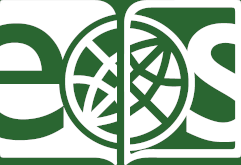Nicolò Tartaglia was born in Brescia in 1500 and died in Venice at the age of 57.1 The Nova scientia, published in 1537, was his first important work. A relevant Italian edition of Euclid’s Elements2 followed in 1543. In the same year, Tartaglia published three works of Archimedes using the Latin translation of Willem van Moerbeke of the thirteenth century.3 The publication contains Archimedes’s De centris gravium libri duo, Tetragonismus ovvero De quadratura circuli and the first book of the Floating Bodies under the title De insidentibus aquae. In 1546, he then published the Quesiti et inventioni diverse. It is in this text that Tartaglia announced his most important discovery: the solution of cubic equations, which until a few years earlier had been considered impossible. However, his work was primarily a denouncement of plagiarism, since he had confidentially disclosed this discovery to another mathematician, Girolamo Cardano, who despite having sworn an oath of secrecy, had published it a year earlier in his work Artis magnae sive de regulis algebraicis.4 As a consequence, the famous twelve Cartelli di matematica disfida were produced between 1547 and 1548. Though Tartaglia was unable to expose the truth of the case during his lifetime, this incident did not put an end to his scientific contributions. In Venice in 1551, he published his Ragionamenti de Nicolo Tartaglia sopra la sua travagliata inventione,5 a text based on Archimedes’ De insidentibus acquae that addressed the practical application of this knowledge, as the invention consisted of a method for raising sunken ships. At the end of his life, Tartaglia produced his General trattato di numeri e misure,6 a collection of 204 problems of both the everyday and the more sophisticated kind, with the respective mathematical solutions. It was published in several stages between 1556, still during his lifetime, and 1560, posthumously. Finally, a new edition of the medieval work of Jordanus de Nemore about the science of weights—entitled Jordani opusculum de ponderositate7—and prepared by Tartaglia, was found and published in 1565.
In this by no means comprehensive list of Tartaglia’s works, one finds once again the direction of his research so apparent in the content of the Nova scientia. While Tartaglia was an excellent mathematician and dedicated to the most diverse practical activities, this does not mean he was particularly original or exotic in the sixteenth century. On the contrary, his profile was typical of a Renaissance mathematician.8 Regardless of one’s position in society, be it as royal mathematician, teacher at a school of arithmetic or lecturer at a university, the sixteenth-century mathematician was almost always a figure active in the fields of both practical and theoretical knowledge. As has been clarified in a precise historiographic tradition, Nicolò Tartaglia was an engineer-scientist who roamed both the battlefields of the bombardiers and the Latin editions of the great works of antiquity.9
Not only through his works, but also due to his extensive oral and teaching activities, Tartaglia is revealed to the historian as a fundamental figure in the diffusion of the mathematical culture of the Renaissance. Around the age of twenty Tartaglia moved to Verona, where he remained until the end of 1534. He then moved for the first time to Venice, at that time one of the most important cultural centers of Europe. Tartaglia had already been active in Verona as a teacher in the public and private spheres, and was consulted on the widest variety of topics, ranging from money exchange to surveying and valuation.
Probably from 1521, but certainly 1529 on, Tartaglia worked as a teacher of arithmetic.10 Despite his rising fame, he continued this activity even after moving to Venice. In fact, it was in Venice that he published the Nova scientia, in response, as the author himself affirmed, to the extraordinary expansion of the Ottoman Empire under Suleiman II. At the beginning of 1548, he left Venice for Brescia, but stayed there for only eighteen months as the promise of a higher position was not fulfilled. During this period the dispute between mathematicians concerning the solution of cubic equations ended in Milan, as related above.11 He then returned to Venice where he remained until his death.
Footnotes
For a biography of Tartaglia, see Gabrieli 1986. See also Rose 1975, 151–158.
Nemore and de 1565. For Tartaglia’s role in Renaissance developments in the science of weights, see Damerow and Renn 2012, section 3.6.
For a more in-depth look at the basic themes of the sixteenth-century mathematician, see Biagioli 1989. See also Cuomo 1998.
The same kind of research approach based on the concept of the engineer-scientist was used for a monographic work on Galileo Galilei, professor of mathematics at the University of Padua (Studio di Padova). For further details, see Valleriani 2010a and Valleriani 2008. As far as the relevance of the work of the Renaissance engineer-scientist is concerned, as well as the process of appropriating ancient knowledge, see in particular Damerow and Renn 2010. Similarly, but focusing on the relationship between ancient and Renaissance pneumatics, see Valleriani 2010b, 120–141.
